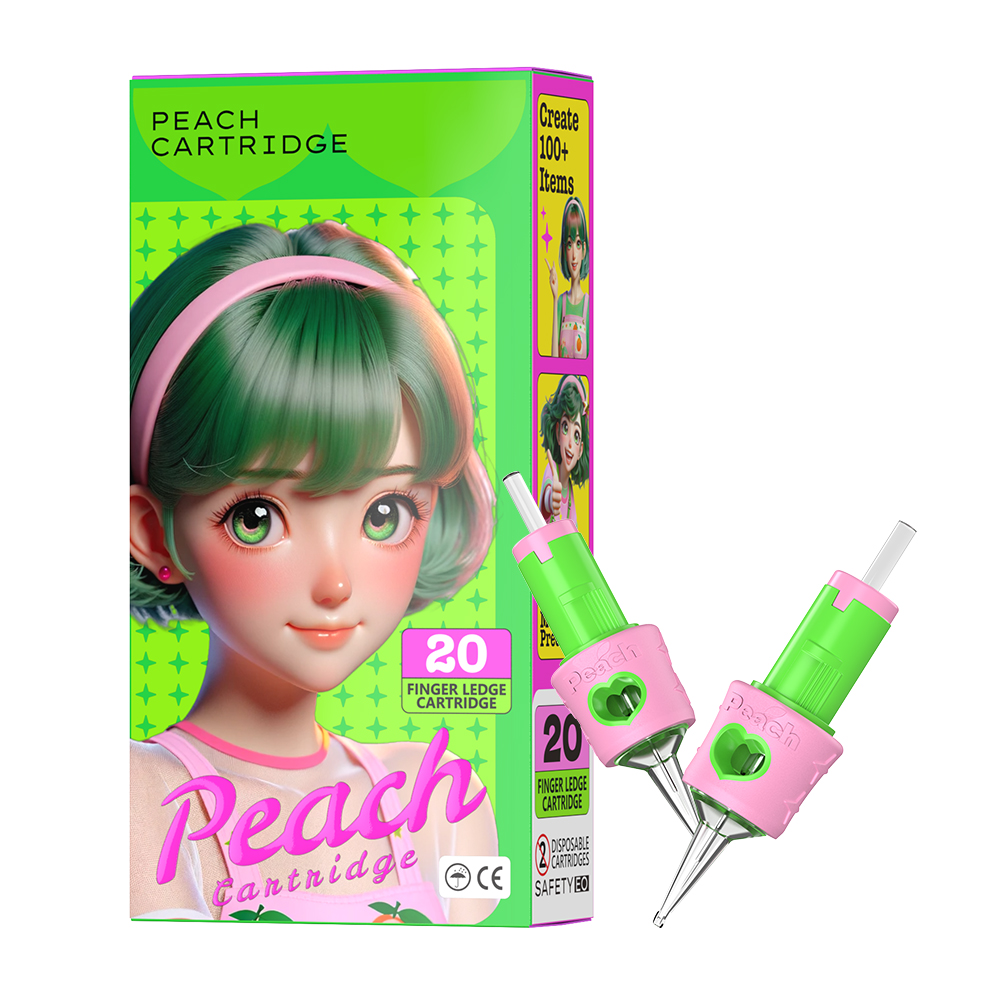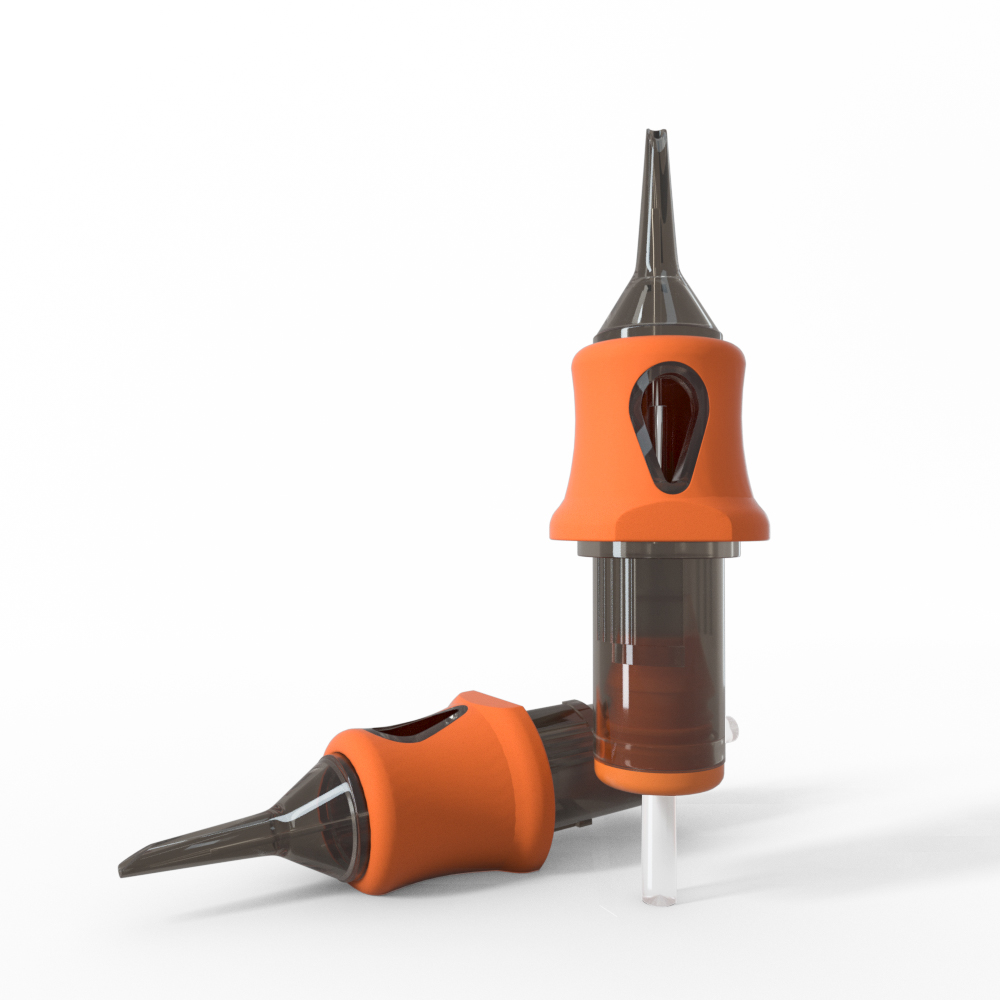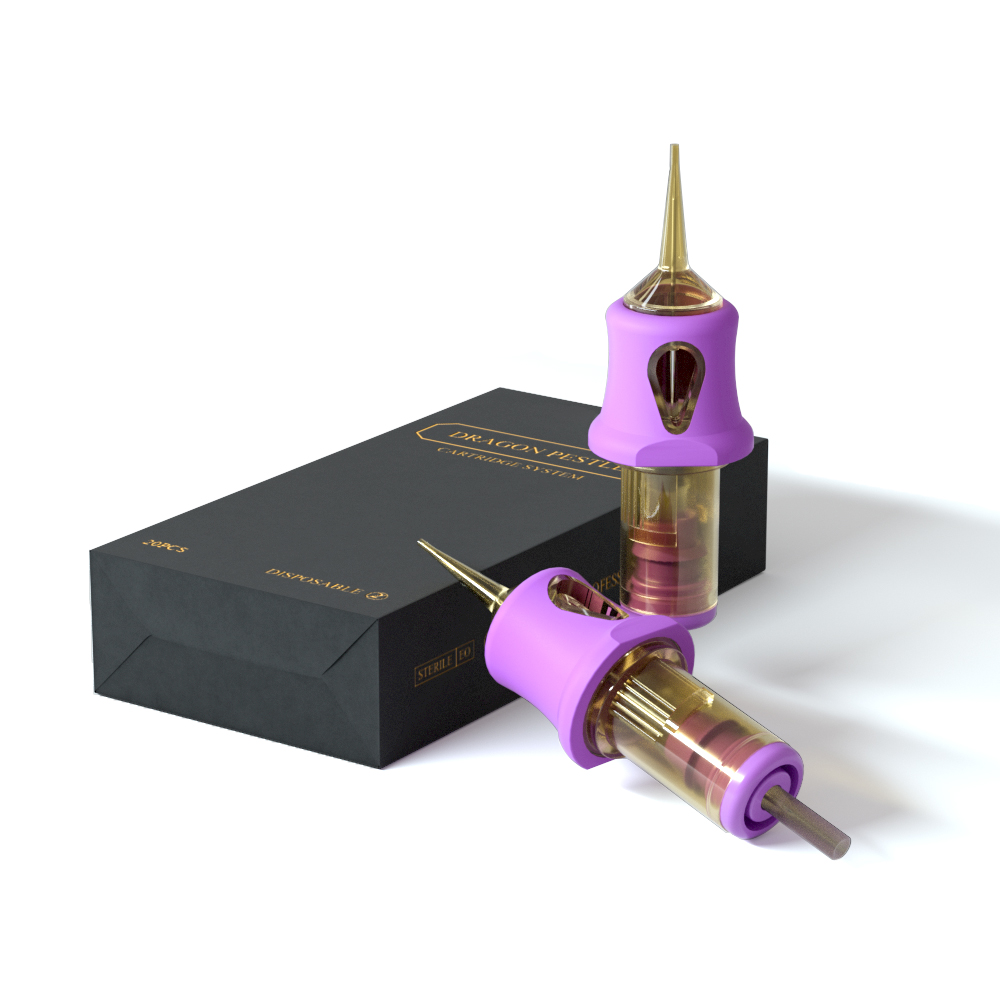A: Round Liners (RL)
Round linings are organized in a circular pattern and are utilized for creating accurate lines and thorough work. The needles in this arrangement are securely packed, permitting sharp, clean lines. They’re ideal for detailing and outlined styles. Artists commonly choose round liners when they need to function on intricate details or great line tattoos.
B:Round Shaders (RS)
Round shaders resemble round liners but with a mild variation in spacing. The needles are prepared in a round pattern like linings however are more spaced out. This arrangement is best for shading and tinting smaller sized areas, offering a softer effect than round liners. These needles are versatile and can be utilized for tiny details and shielding in restricted locations.
C:Magnum Shaders (MG)
Magnum shaders are developed with numerous needles soldered in two rows, stacked on top of each various other. This arrangement permits for a bigger surface location, making them the go-to choice for completing bigger areas with shade or shading. Magnums are excellent for smooth slope shading and shade packaging, making them a preferred for picture tattoos and massive items.
D:Bent Magnums (CM or RM)
Curved magnums, also called rounded magnums, resemble typical magnum shaders but have a minor curve at the suggestion. This style lowers injury to the skin by dispersing pressure more uniformly. The bent form is particularly helpful for mixing shades and creating soft shades, making them an excellent selection for sensible tattoos where refined gradients are critical.
E:Apartment Needles (FL)
Flat needles are set up in a solitary straight line. They are frequently utilized for developing strong, straight lines and are perfect for geometric patterns and script tattoos. Due to their direct configuration, flat needles supply a whole lot of ink in a single pass, which is valuable for solid, specified lines and shielding methods that need thick shade application.
F:Dual Stack Magnums
| Needle Type | Arrangement | Ideal Used For |
|---|---|---|
| Round Liner (RL) | Circular pattern, snugly packed | Accurate lines, thorough job |
| Round Shader (RS) | Circular pattern, spaced out | Shielding, tiny area tinting |
| Magnum Shader (MG) | Two rows, stacked | Larger location shading, color packing |
| Bent Magnum (CM/RM) | Curved suggestion, 2 rows stacked | Blending shades, soft shielding |
| Flat Needle (FL) | Single straight line | Vibrant lines, geometric patterns |
| Double Stack Magnum | Tighter setup, more needles | Heavy saturation, cover-ups |

II:Selecting the Right Needle for Your Tattoo Style
A:Recognizing the Role of Different Needle Types
The primary step in selecting the right needle is understanding the role that each type plays. Round liners, for example, are perfect for great lines and comprehensive job, making them the best choice for detailed designs. On the other hand, round shaders are much more suited for thicker lines and shading in smaller sized locations.
B:Matching Needle to Tattoo Style
As soon as you understand the various types of needles, matching them to your tattoo style ends up being less complicated. For example, if you are servicing a typical tattoo with vibrant lines and solid shades, round liners and flat magnums are usually the most effective choices. In comparison, for a picture tattoo needing smooth gradients and fine information, you could opt for rounded magnums and rounded shaders.
B:Testing and Experience
Ultimately, selecting the ideal needle often boils down to individual choice and experience. As you get extra experience, you will develop a feel for how different needles communicate with the skin and ink. Try out various kinds and configurations will certainly help you refine your method and enhance your results.
III:Advanced Tips for Using Tattoo Needles
A:Needle Depth and Angle
One of the most essential facets of utilizing tattoo needles is controlling the deepness and angle at which the needle passes through the skin. For different sorts of tattoo needles, the optimal depth can vary. Typically, the needle ought to permeate the skin between 1.5 mm to 2mm. Changing the angle of the needle can likewise impact the top quality of the line work or shading, with a steeper angle typically giving a lot more accurate lines.
B:Needle Groupings and Configurations
Familiarize yourself with the different needle groups and configurations. For instance, round liners are ideal for producing crisp lines, while magnum shaders are excellent for filling out big areas and producing smooth slopes. Understanding the function of each type enables you to select the most suitable needle for your preferred effect.
C:Needle Maintenance
Appropriate upkeep of your needles is necessary for both safety and security and performance. Always make sure that needles are sterilized before usage to stop infections. Additionally, frequently check for any indicators of wear or damage, as a blunt or curved needle can cause unnecessary injury to the skin.
D:Ink Flow and Needle Speed
The circulation of ink and the speed of the needle are interconnected. Readjusting the speed of your tattoo maker can affect how the ink is transferred into the skin. For different kinds of tattoo needles, you might need to fine-tune the machine’s setups to accomplish optimum results. Slower rates can offer even more control for detailed job, while quicker rates are better for covering bigger areas promptly.
E:Skin Types
Various skin types can react in different ways to tattoo needles. For circumstances, delicate skin may require a lighter touch and slower needle speed to decrease irritation. On the other hand, tougher skin might require an extra aggressive strategy. Having the ability to adjust your technique based on the customer’s skin kind will improve the general high quality of the tattoo.
F:Practice and Experience
| Idea | Description |
|---|---|
| Needle Depth and Angle | Control the deepness (1.5 mm to 2mm) and angle for ideal line job and shading. |
| Needle Groupings and Configurations | Recognize the purpose of various groupings, such as round liners and magnum shaders. |
| Needle Maintenance | Make sure needles are decontaminated and look for any type of indications of wear or damage. |
| Ink Flow and Needle Speed | Change equipment settings based upon needle type to manage ink circulation and speed. |
| Skin Types | Adjust technique based on the customer’s skin kind for far better outcomes. |
| Practice and Experience | Continuous technique and experimentation with various needles and methods. |
IV: Typical Mistakes When Choosing Tattoo Needles
A:Do You Understand the Purpose of Each Needle Type?
When choosing tattoo needles, one of the most usual blunders musicians make is not fully comprehending the certain purpose of each needle type. With many different sorts of tattoo needles readily available, it’s important to select the ideal one for the desired effect. For example, making use of a round liner needle when a magnum shader is required can cause unsuitable results, such as irregular lines or uneven shielding.
B:Are You Using the Same Needle for Different Styles?
One more frequent mistake is counting on a one-size-fits-all strategy. While it may be alluring to use the very same needle for multiple styles, this usually compromises the high quality of the work. Each needle type is made for a specific function, and using the wrong one can prevent the final end result of the tattoo.
C:Are You Considering Needle Size and Configuration?
Some musicians likewise neglect the significance of needle collection and size. Falling short to take into consideration these elements can lead to an absence of accuracy and control. For instance, selecting a needle with a bigger diameter than needed could trigger extreme injury to the skin, while a smaller sized size may not provide the wanted ink saturation.
D:Is Your Needle Compatible with Your Machine Settings?
It’s additionally important to match the needle to the tattoo machine’s setups. Ignoring the compatibility between the needle and machine can lead to irregular efficiency, such as irregular ink circulation or problem in regulating the deepness of the needle. This can be particularly problematic when dealing with detailed or delicate layouts.
V:Conclusion
Picking the correct needle for your tattoo style is not simply about choice but also regarding comprehending exactly how different needles interact with the skin and ink. As an example, round liners are excellent for exact outlines, while magnums are the go-to for shading and loading large areas.
Frequently Asked Questions
The primary kinds of tattoo needles include round linings (RL), round shaders (RS), magnum shaders (MG), curved magnums (CENTIMETERS), and flat shaders (FS). Each type serves a details objective and is designed for various tattooing strategies.
Picking the appropriate needle depends on your tattoo design. For thorough line job, round linings are suitable. Round shaders function well for shielding and filling up. Magnum shaders and curved magnums are best for bigger areas and gradient shading. Flat shaders are made use of for geometric layouts and complex details.
While it is possible to make use of the exact same needle for both jobs, it is not recommended. Different kinds of tattoo needles are especially made for either lining or shading to accomplish the most effective results. Utilizing the suitable needle makes sure accuracy and high quality in your job.
Tattoo needles should be changed after each usage to keep hygiene and stop cross-contamination. Always utilize disinfected needles and deal with them correctly after each session.
Typical errors include utilizing the wrong kind of needle for the preferred effect, not taking into consideration the size of the needle groups, and overlooking to change needles in between different tattooing jobs. These errors can lead to suboptimal outcomes and possible wellness threats.
No, recycling tattoo needles is extremely prevented because of the threat of infection and contamination. Constantly utilize new, sanitized needles for each tattoo session.



